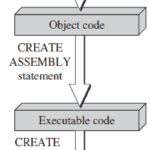The preceding chapters introduced Transact-SQL statements that belong to the data definition language and the data manipulation language. Most of these statements can be grouped together to build a batch. As previously mentioned, a batch is a … [Read more...] about Procedural Extensions, IF & WHILE Statements
Stored Procedures and User-Defined Functions
Exception Handling with TRY, CATCH, and THROW
Versions of SQL Server previous to SQL Server 2005 required error handling code after every Transact-SQL statement that might produce an error. (You can handle errors using the @@error global variable. Example 13.1 shows the use of this variable.) … [Read more...] about Exception Handling with TRY, CATCH, and THROW
Stored Procedures , Creating and Executing
A stored procedure is a special kind of batch written in Transact-SQL, using the SQL language and its procedural extensions. The main difference between a batch and a stored procedure is that the latter is stored as a database object. In other words, … [Read more...] about Stored Procedures , Creating and Executing
The EXECUTE Statement with RESULT SETS Clause
SQL Server 2012 introduces the WITH RESULT SETS clause for the EXECUTE statement. Using this clause, you can change conditionally the form of the result set of a stored procedure.The following two examples help to explain this clause. Example … [Read more...] about The EXECUTE Statement with RESULT SETS Clause
Stored Procedures & Common Language Runtime
SQL Server supports the Common Language Runtime (CLR), which allows you to develop different database objects (stored procedures, user-defined functions, triggers, user-defined aggregates, and user-defined types) using C# and Visual Basic. CLR also … [Read more...] about Stored Procedures & Common Language Runtime
Creation and Execution of User-Defined Functions
User-Defined Functions are created with the CREATE FUNCTION statement, which has the following syntax:schema_name is the name of the schema to which the ownership of the created UDF is assigned. function_name is the name of the new function. … [Read more...] about Creation and Execution of User-Defined Functions
Changing the Structure of UDFs, UDFs and CLR
Changing the Structure of User-Defined FunctionsThe Transact-SQL language also supports the ALTER FUNCTION statement, which modifies the structure of a User-Defined Function. This statement is usually used to remove the schema binding. All … [Read more...] about Changing the Structure of UDFs, UDFs and CLR



